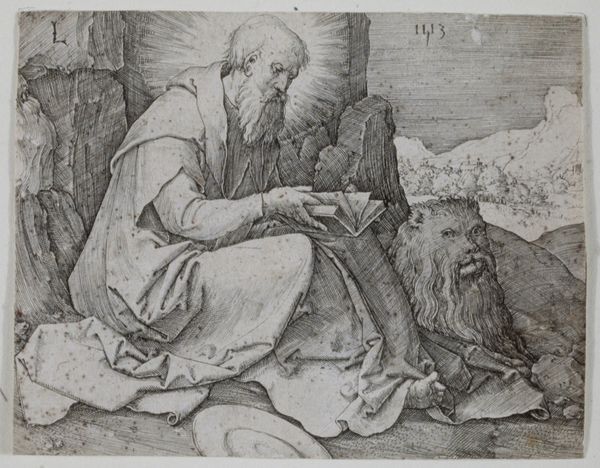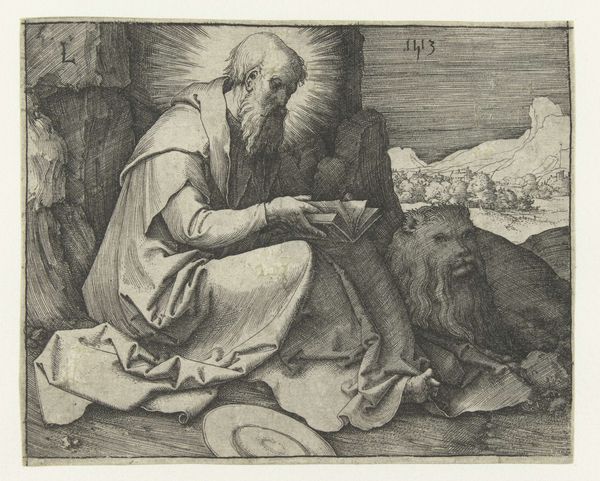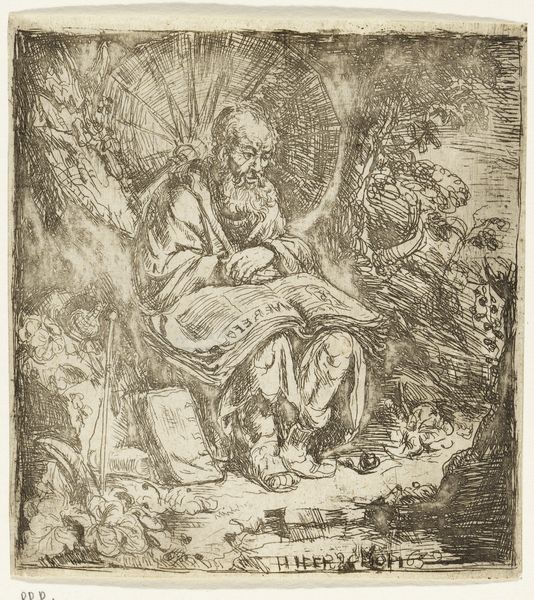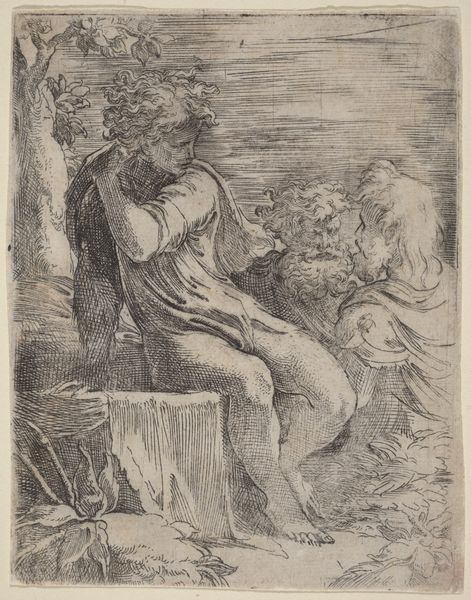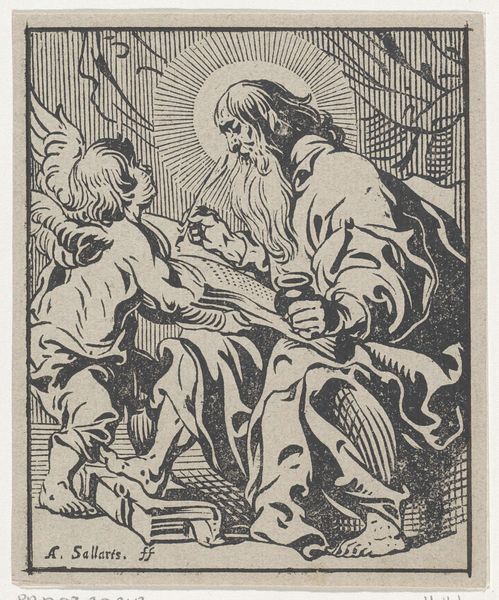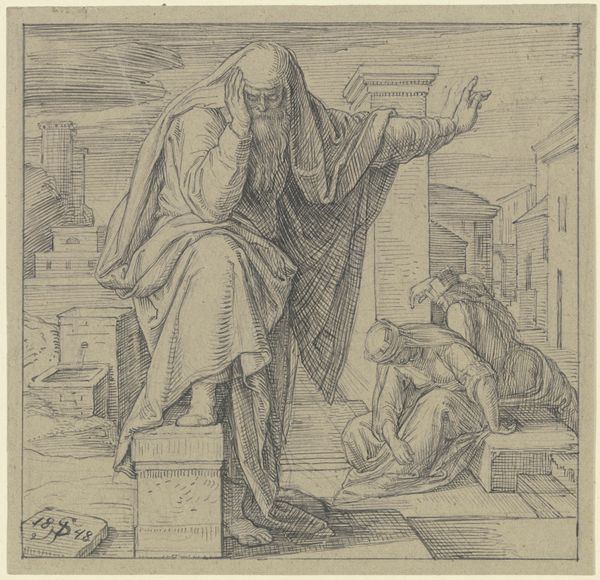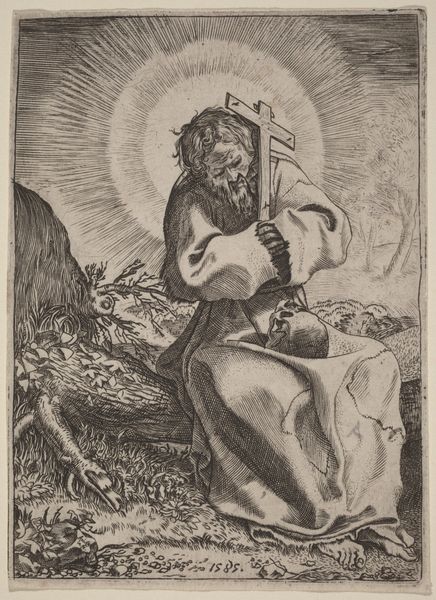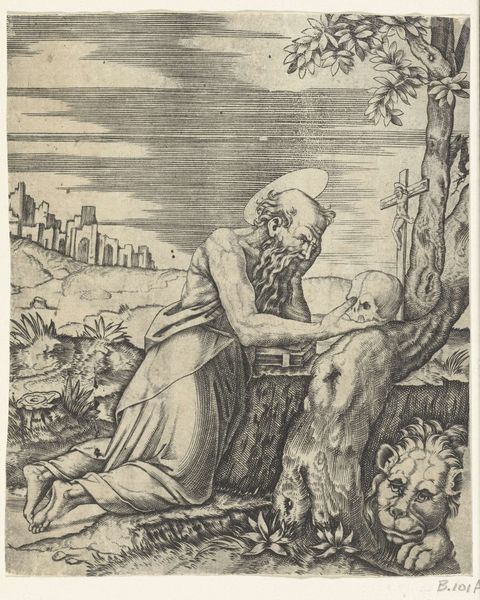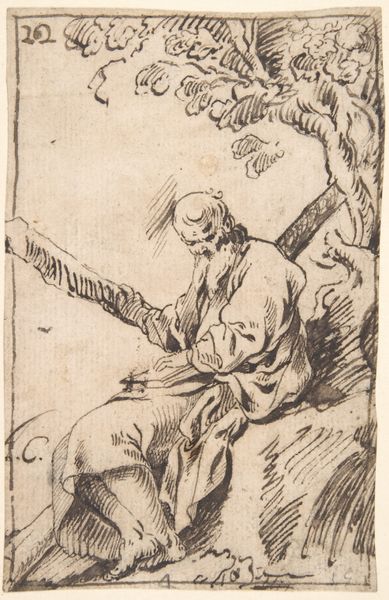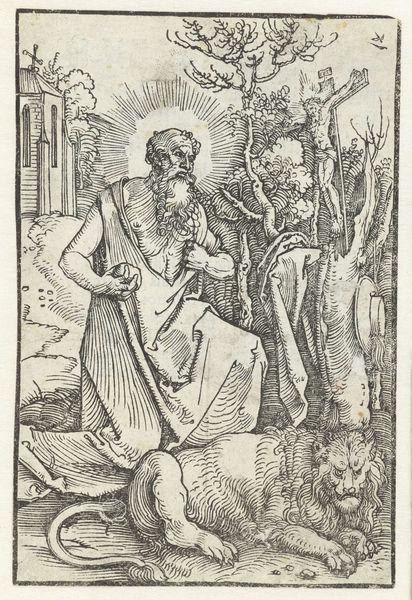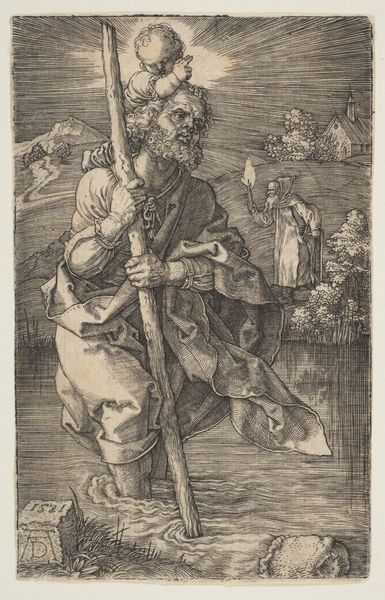
print, engraving
#
narrative-art
# print
#
landscape
#
classical-realism
#
figuration
#
history-painting
#
northern-renaissance
#
engraving
Copyright: National Gallery of Art: CC0 1.0
Curator: Here we have Lucas van Leyden's "Saint Jerome in a Landscape," an engraving dating back to 1513. Editor: It's strikingly somber, even stark. The lines are so precise, giving the scene a weightiness that pulls you in, almost like a forced meditation. Curator: Indeed. Leyden was a master engraver, and the clarity he achieved using metal tools on copper plates is remarkable. Consider the economic implications: the price of copper, the apprenticeship system required to achieve this level of skill, the printing press facilitating the dissemination of knowledge... Editor: Absolutely. The Northern Renaissance was marked by increased printmaking—allowing these religious and historical narratives to reach broader audiences, impacting religious thought and individual devotion in transformative ways. What I see, beyond that precise method, is an almost humanized loneliness. Even the lion seems… weary. Curator: I agree. And it’s worth pointing out how printmaking blurred the lines between art and craft during this time. Was Lucas van Leyden artisan or artist? The creation of devotional images like these provided income to households, affecting the distribution of labor within communities. Editor: Certainly, though it is not strictly either/or. Consider also the power dynamics inherent in portraying St. Jerome: he translated the Bible into Latin, becoming a pivotal figure in the dissemination of scripture, effectively centralizing interpretation within the Church. How does his solitary depiction speak to evolving attitudes towards faith and personal introspection during that period? Curator: An astute observation. Now, about those visual lines - look closely at the layering of strokes that comprise the cliffs behind Saint Jerome or the muscular definition of the lion. He had a remarkable understanding of form, built with labor-intensive mark-making. Editor: Yes, and look at the gaze. Saint Jerome pores over the scripture as if searching for something - is it peace? Forgiveness? And the lion seems like a burdened guardian, trapped with him in that emotional, self-imposed exile. It raises compelling questions about isolation, faith, and the weight of knowledge within these historically turbulent religious landscapes. Curator: Ultimately, viewing this work allows us to observe a particular confluence of material processes, class structures, and religious commission through the lens of Leyden’s sharp artistry. Editor: Precisely. Through historical lenses we see a potent image rife with tensions between authority and autonomy, spiritual contemplation, and earthly burden, leaving us to ponder the enduring resonance of individual struggle in a world grappling with change.
Comments
No comments
Be the first to comment and join the conversation on the ultimate creative platform.
